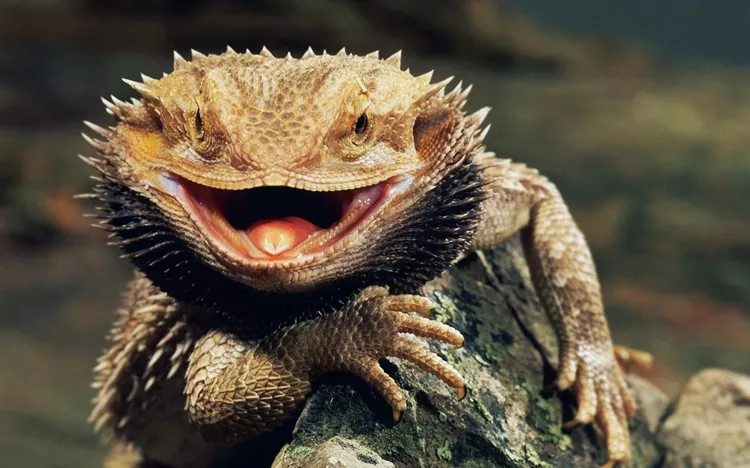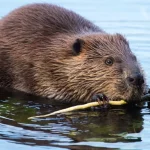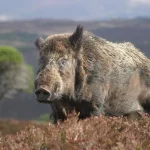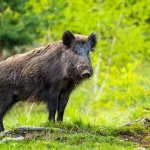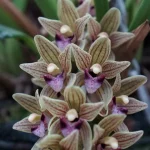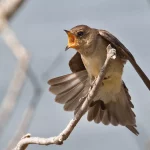The bearded dragon is a fascinating reptile that has captivated the hearts of pet owners and animal enthusiasts worldwide. Known for its unique appearance, docile nature, and intriguing behaviors, the bearded dragon is also admired for its vivid colorations. These reptiles are not just beautiful to look at—they also use their colors to communicate, express emotions, and respond to changes in their environment. The colors of a bearded dragon hold significant meaning, and understanding these color changes can help you interpret what your pet is feeling or experiencing.
In this article, we will explore the various colorations of the bearded dragon and what they mean. From their natural shades to the more vibrant colors they can display, the significance of these colors provides valuable insights into the health, mood, and behavior of your bearded dragon. We will also examine how these colors are influenced by genetics, environmental factors, and social interactions.
The Basic Bearded Dragon Colors
Bearded dragons naturally exhibit a range of earthy tones. These primary colors serve as a foundation for understanding their behavior and physiological state. The most common colors you will see in a bearded dragon include:
Brown
Brown is one of the most common natural colors of a bearded dragon. It reflects their native desert environment, where they blend with the surrounding landscape for camouflage. Brown bearded dragons often have a mix of sandy or reddish-brown hues, especially on their backs and sides. This color helps them stay hidden from predators in the wild. When a bearded dragon is in a neutral state or feels safe in its environment, its coloration will often reflect these natural brown tones.
Tan
Tan is another color frequently seen in bearded dragons. This lighter brown color is often seen on their bellies and sides. It is a less intense version of brown, making it a good camouflage in lighter desert terrains, where they might blend in with sand and rocks. The tan coloration also allows bearded dragons to absorb heat from the sun more effectively.
Gray
Gray can be another color exhibited by bearded dragons, often appearing on their backs, limbs, or the sides of their bodies. This color is typically seen when the dragon is in a relaxed or neutral state. While gray might seem somewhat dull, it is still part of the natural color spectrum of a healthy bearded dragon.
Vibrant Colors and Their Meanings
While brown, tan, and gray are typical natural colors, bearded dragons can also display much more vibrant and striking colors, depending on their genetic lineage, mood, and physical state. These vivid hues often have symbolic meanings and can provide clues to the dragon’s emotional state or health.
Red
Red is one of the most intense and striking colors that a bearded dragon can display. This color is often associated with aggression, excitement, or territorial behavior. A bearded dragon may turn red when it feels threatened, stressed, or during mating season when males compete for the attention of females. During these times, a male bearded dragon might display a vibrant red throat (the “beard”) to assert dominance or signal its presence to other dragons.
A red bearded dragon can also indicate that the animal is actively engaged in physical activity or experiencing heightened emotional arousal. However, if a bearded dragon turns red and remains so for an extended period, it could also be a sign of stress, illness, or injury, and it is essential to monitor its behavior and health.
Orange
Orange is a warm and inviting color that many bearded dragons exhibit, particularly those in certain breeding lines or with selective color morphs. Orange typically signifies a calm and healthy state for a bearded dragon. It is often displayed during periods of happiness, relaxation, or when the dragon feels secure in its environment. Some dragons, especially those bred for vibrant colors, can develop orange skin as their primary color. This can be a sign of a well-cared-for, happy animal.
During mating or courtship, male bearded dragons may display bright orange coloring on their throats and beard as part of their display to attract females. Additionally, if a bearded dragon is basking in the sun, its skin may turn orange as it absorbs warmth and light. In general, orange signifies a healthy, active, and well-adjusted bearded dragon.
Yellow
Yellow is another bright color that can appear on a bearded dragon, either as a primary color or as an accent. Yellow signifies a healthy and positive state in most cases. This color is commonly seen in dragons with yellow morphs, but even wild bearded dragons may develop yellowish hues in certain parts of their body, such as the tail or underside.
Yellow bearded dragons often appear when they are basking under bright light, or when they are feeling relaxed and content. This color is also commonly linked to the display of confidence and contentment. In some cases, yellow markings can appear during mating displays or when a bearded dragon is feeling particularly proud of its territory. However, excessive yellowing, especially around the face, could signal possible health issues, such as skin irritation or infection, which would require attention.
Green
Green is a less common but still significant color for bearded dragons. It is usually linked to a bearded dragon’s emotional state or health condition. While green may be associated with tranquility or peacefulness in some cases, it is also important to note that green can signal an issue with the reptile’s health.
In the wild, bearded dragons may display greenish hues when they are well-fed or in a calm, satisfied state. However, green coloration can also be linked to an issue with their diet, environment, or health. If the green color is not associated with natural coloration and persists abnormally, it may indicate a bacterial infection, parasite, or other health concerns. It is important to monitor the dragon closely if a green tint develops unexpectedly.
Black
Black is another color that is commonly seen in bearded dragons but can have different meanings depending on the circumstances. A bearded dragon’s skin may turn darker when it is feeling threatened or stressed, as part of its natural “defense” response. This can also happen when the bearded dragon is trying to absorb more heat from its environment or when it is attempting to blend into darker surroundings.
Black coloring on the beard, tail, or other parts of the body may also signify fear or aggression. It is often seen when a bearded dragon is in a confrontation with another animal or during moments of high stress. However, if the black color appears suddenly and without any apparent reason, it could signal a more serious issue, such as a health concern that requires medical attention.
See Also: 15 Coolest Spirit Animals
The Role of Temperature and Lighting on Bearded Dragon Colors
The color changes of a bearded dragon are often influenced by the temperature and lighting conditions in its environment. These reptiles are ectothermic, meaning they rely on external heat sources to regulate their body temperature. Their coloration helps them adapt to these conditions and maximize their heat absorption or cooling.
Basking in Sunlight
Bearded dragons naturally bask in the sun to regulate their body temperature. When basking, they may appear brighter, with more vivid colors like orange, yellow, and red. These colors are more noticeable in well-lit environments where the dragon is able to absorb the sun’s warmth effectively. Basking can also cause the skin of a bearded dragon to darken slightly as it absorbs heat.
Temperature Changes
If the temperature in a bearded dragon’s enclosure fluctuates significantly, it may alter its coloration. When a bearded dragon is too cold, it might appear paler or even show signs of blackening as it tries to absorb more heat. Conversely, if the dragon is too warm, its color may become lighter or it may seek cooler areas to regulate its body temperature.
Nighttime and Rest
During the nighttime or when a bearded dragon is resting, its colors may become more muted and less vibrant. This is a natural response to a period of inactivity, as the dragon is conserving energy and resting. Some colors, like orange or red, may dim or fade during these times, reflecting the reptile’s state of relaxation.
Bearded Dragon Morphs and Their Colorations
In addition to the natural colors of bearded dragons, there are various morphs (genetic variations) that have been selectively bred to showcase more vibrant, unique colors. These morphs include both natural and selectively bred combinations of hues and patterns. Common bearded dragon morphs include:
Translucent Morph
Bearded dragons with the translucent morph typically have lighter, almost translucent skin. This trait allows their internal organs and structure to be visible through their skin, which is a striking characteristic. These dragons often exhibit lighter tones, including shades of white, yellow, and orange.
Hypo-Melanistic Morph
The hypo-melanistic morph is characterized by reduced levels of melanin, resulting in lighter colors and less contrast between the dragon’s body and its environment. These bearded dragons may have vibrant yellows, oranges, or reds, with minimal dark markings.
Leatherback Morph
The leatherback morph has smooth, leathery scales, giving them a distinct appearance. These dragons often have rich colors, with some exhibiting deeper hues of red, orange, and yellow. Leatherbacks are prized for their smooth texture and vibrant colors.
Red and Yellow Morphs
As the name suggests, these morphs focus on bright, bold red and yellow colorations. Selective breeding has produced dragons with stunningly vibrant red beards, bodies, and tails, with deep yellow accents on their undersides and legs.
Emotional and Behavioral Interpretations of Color Changes
As previously mentioned, a bearded dragon’s colors are not only affected by their physical environment but also by their emotional state. Understanding these color changes can provide a window into how a bearded dragon is feeling and reacting to different stimuli. Here are some of the most common emotional and behavioral responses linked to color changes:
Stress and Fear
When a bearded dragon is stressed or afraid, it may exhibit darker, muted colors, such as black or brown. This is often accompanied by defensive postures, such as puffing out its beard or flattening its body. The bearded dragon might try to make itself appear larger and more intimidating to ward off perceived threats. These darker colors signal the need for the animal to retreat or prepare for a fight or flight response.
Excitement or Mating Behavior
During mating season or when a bearded dragon is excited, it may display bright colors such as red, orange, and yellow. Male dragons, in particular, use these colors to attract females. Brightly colored throats and beards are part of a visual display to signal readiness for mating.
Calm and Relaxed State
When a bearded dragon feels calm and content, it will likely display more natural, muted colors like tan, gray, or light brown. These colors reflect a state of ease and comfort. Relaxed dragons will bask under the sun or explore their environments in a calm manner, often exhibiting vibrant colors only when interacting with their surroundings.
Conclusion
Understanding the colors of a bearded dragon provides valuable insights into its physical and emotional state. From the earthy tones of brown and tan to the vibrant reds, oranges, and yellows, each color change has meaning and purpose. Bearded dragons are not just stunning creatures to observe; their colors can help you interpret their behaviors, moods, and health. By recognizing these color patterns and their meanings, you can enhance your understanding of your bearded dragon’s needs and provide a supportive environment for its well-being.
Related topics:

